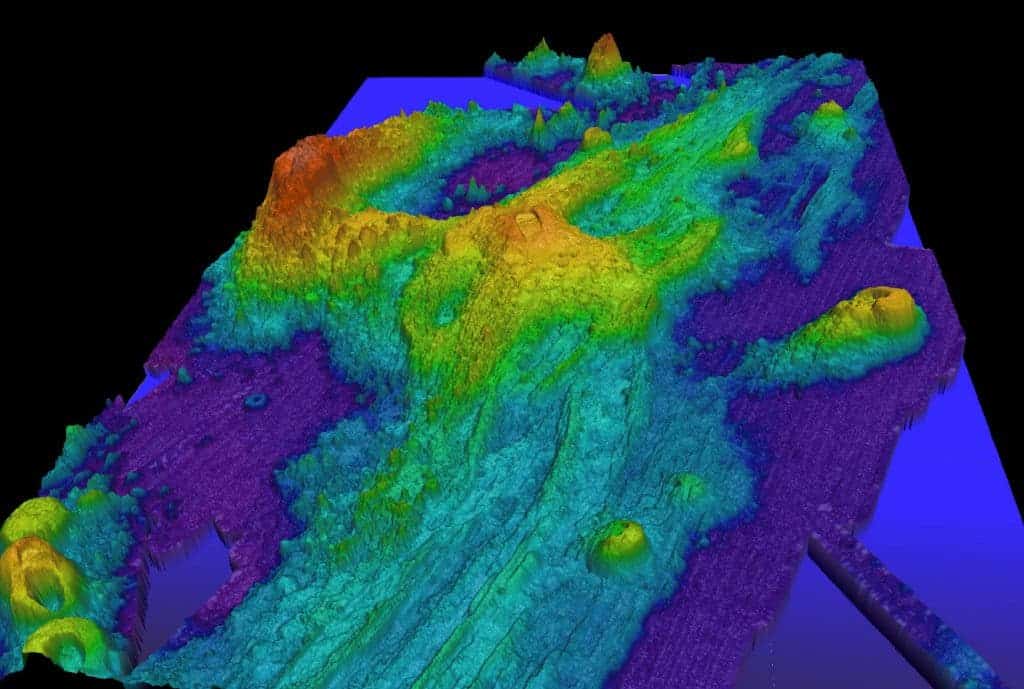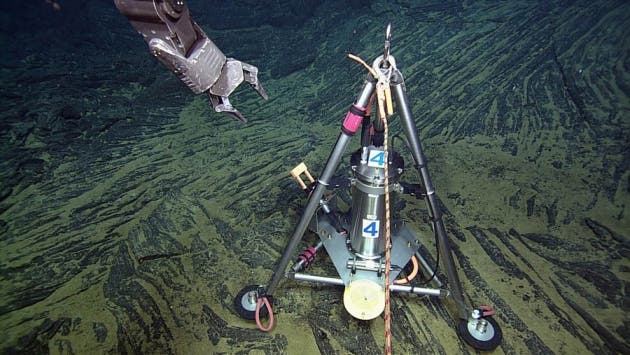An underwater volcano 300 miles off the coast of Oregon has awakened from its slumber and apears to spew out lava, triggering numerous earthquakes. There is no immediate danger, but geologists are excited to be able to study it in real time.

Almost 8,000 earthquakes were observed and scientists immediately knew the source was an underwater volcano – volcanoes tend to send out different type of waves than tectonic earthquakes. Monitoring instruments on the sea floor off Oregon captured the action in real time, and took an unprecedented look at a deep-sea eruption – the most common type of volcanic eruption, as most volcanoes on Earth are located at tectonic boundaries underwater.
“This is what I’ve been dreaming about for decades,” says John Delaney, an oceanographer at the University of Washington in Seattle who spearheaded the drive to send data from Axial to shore along a sea floor cable. “This is a new era of exploration in the Earth sciences.”
The volcano in case is called the Axial Seamount – a seamount and submarine volcano located on the Juan de Fuca Ridge, approximately 480 km (298 mi) west of Cannon Beach, Oregon. Axial Seamount was first detected in the 1970s atop the Juan de Fuca Ridge, where hot magma wells up from deep inside the Earth and fills a reservoir beneath the volcano. It was studied by satellite altimetry, and mapped and explored in the 1980s, but now, scientists are ready to take the study to the next level with the $386-million Ocean Observatories Initiative (OOI).

“It’s kind of like a balloon — as magma is going into the balloon, it’s inflating, and it pushes the seafloor up,” William Chadwick, a geologist at Oregon State University said. “As more and more magma gets in, the pressure builds. Eventually, it reaches some critical pressure where [the seamount] can’t hold it in anymore, and then it squirts out.”
Alongside seismometers, the OOI placed instruments which measure pressure and ground deformation, and they show that the seafloor around the volcano has dropped by 2.4 meters over the course of 3 days. This subsidence is an indication of the magma chamber sinking as lava bursts out the surface. The problem right now is that even as the The raw seismometer data are live, and next week the data from the ground-deformation instruments should be too, right now, there is too much clunked data which is not yet available to the worldwide scientific community, because not all the servers are up.
“We’re about 75% jazzed and 25% frustrated,” Chadwick says. “We’re poised to learn a lot more when we’re able to look at all the data and get everybody involved and compare notes.”
These are good times to be an earth scientist,
Was this helpful?



